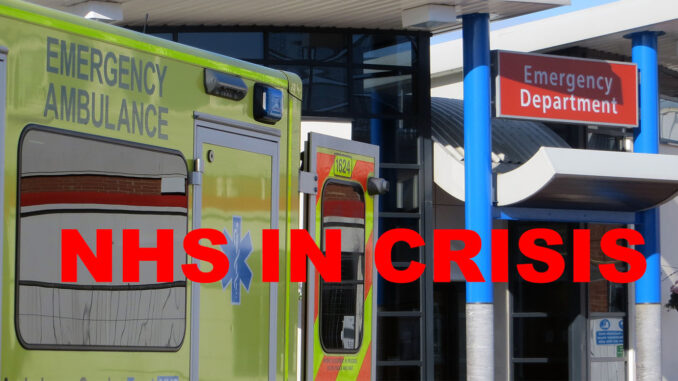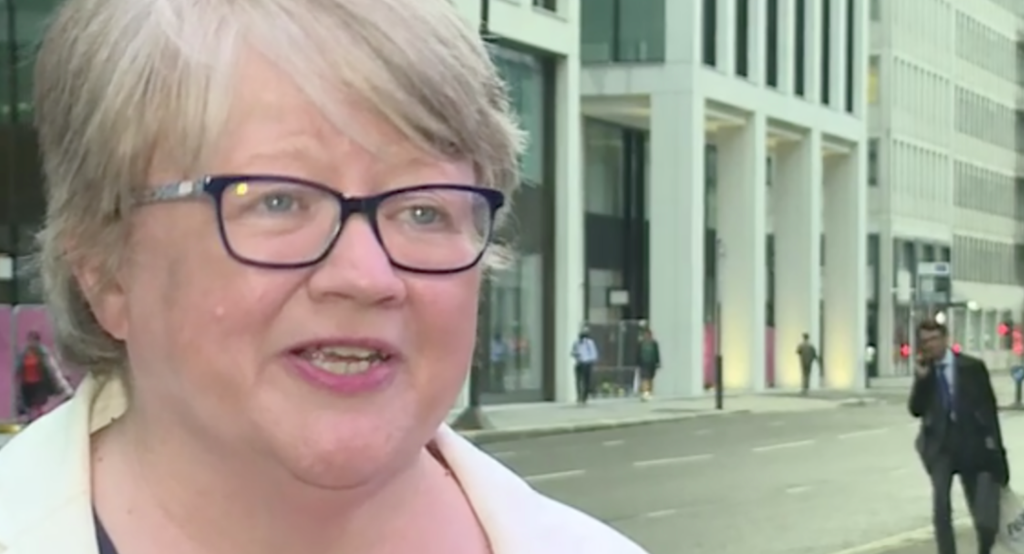
When we are subjected to ‘alternative facts’ by our own government, such as claims of ‘record’ numbers of doctors and nurses and investment in the NHS, one can be forgiven for misunderstanding the depth and severity of the crisis in healthcare that was predicted and has now befallen the UK.
When deliberate obfuscation of the harms that Covid has caused, and is still causing, is spread by our own government, and select groups of libertarian outriders are falsely claiming that the current collapse of emergency medical care is due to the effects of lockdowns, one needs to ask where this situation of State-sponsored disinformation is leading us.
Worst NHS figures ever recorded
Summer 2022 has brought with it the worst NHS performance figures ever – a true record of this Government. Whilst blaming a heatwave, Brexit and Covid is easy and conveniently tempting, the truth is much deeper and dirtier. When David Cameron set the £30bn NHS annual funding target to in 2015 to be achieved by 2020, the NHS had just endured the prior £20bn target of NHS ‘efficiency savings’ cuts in annual funding over 2010-15.
Together with the unspoken (but documented) policy of running down NHS staffing and bed capacity with predictable results, government policy has also purposefully allowed NHS capital infrastructure such as CT/MRI scanners, hospitals and GP Practice buildings to deteriorate. Hospitals were forbidden to spend money on their own buildings and Government exhausted its central capital spending reserves – instead using capital funds to pay towards day-to-day operational NHS spending.
As far back as 2012, the ‘Zero Tolerance’ report by the Association of Ambulance Chief Executives (AACE) and NHS Confederation had highlighted significant emerging concerns from delayed handover of patients from ambulances to A&E staff and the potential consequent harms to those patients. An updated review from AACE in November 2021 lays bare the stark consequences of having ignored their earlier report. This important piece of research by AACE calculated that the current levels of handover delays could be leading to 160,000 patients coming to harm over a year, with 12,000 patients suffering severe harm, including death from these delays. A staggering 35,000 patients may have come to harm as a result of ambulance handover delays in August alone.
The latest published in-depth study of the effect of long waiting times for admission of patients from A&E departments to a hospital bed is extremely worrying. This research has shown a 16% increase in 30-day death rates of patients who have waited in A&E between 8hrs and 12hrs (compared to average waiting time) for admission to a bed. Our government has wilfully ignored and suppressed data which demonstrates the perilous status of the NHS and our constrained ability to continue to provide safe care to patients – despite hordes of patients, clinicians, academics, journalists and commentators having repeatedly raised the alarm. Further work based on this study – which also incorporated the effect of Covid on the 10% increased current levels of population excess deaths – showed evidence that:
Steve Black, BMJ
Prior to 2017, there weren’t any patients waiting longer than 12hrs on trolleys in corridors (102,000 in June); there weren’t any ambulances queueing outside A&E to hand over patients (up to 25 outside Treliske Hospital in July); there weren’t any patients waiting longer than three months for cancer treatment. There are now 10,200 patients who have waited longer than 104 days for their cancer treatment to begin, a total of 340,000 patients on cancer waiting lists – and rising. This crisis hit the NHS before the coronavirus pandemic and was at least a decade in the making. It was predictable and it was predicted.
A Government in denial
Government Health policy makers remain in a world of denial of their own making. Amidst Covid, austerity, poverty, homelessness, the energy crisis, and a demonstrable collapse in function of the health service, the new Secretary of State, Therese Coffey, has set out her stall to address the NHS crisis. I have just fallen foul of her most impactful announcement: that the ‘Oxford comma’ must never be used in the NHS…I kid you not.

Unfortunately, there is little to laugh about in a situation where our citizens are literally dying due to governmental failure and neglect of its duty to provide healthcare for its population. I wonder if this was the reason why Government literally altered the wording in the NHS constitution from “duty to provide” health services, to “duty to promote” – did they too foresee what was to come?
It is no surprise to see the Tufton Street neoliberals like the Institute of Economic Affairs (IEA) atop their platforms again, eager as ever to trash the NHS with familiar phrases such as: “The NHS model has failed”. But the facts speak otherwise.
Up until 2017, the UK has consistently topped the International Health System Comparison charts, including for clinical measures such as safe care, preventive care, co-ordinated care, chronic disease management, and decline in mortality amenable to healthcare (sorry again, Therese). When IEA pundits claim (falsely) that Germany’s mixed private and publicly provided Health system is better than the NHS, they omit to inform you of Germany’s poor rankings in the comparisons of international performance. Germany’s Health spending is 40% higher per person than the UK and they have more than double our hospital beds, 50-64% more doctors and nurses, and three times the number of CT and MRI scanners (all per capita, 2017 figures). Yet, despite being much better funded and resourced, Germany still doesn’t prove itself better than NHS. When the NHS is funded well, seeking to promote and defend the NHS model, the evidence shows that the NHS does better, and even with funding cut back, it performs as well or better than many countries with better funding.
The message is clear: the NHS is an undervalued health system and it has wilfully been allowed to fall into ruin, with lethal results. I have read the government documents outlining their plans for privatisation and am in no doubt as to why the managed decline of the NHS has been relentlessly pursued, to the benefit only of the private sector, and with now demonstrable harms to the population. Winter is coming.
Dr Nick Mann is a GP and a member of Keep Our NHS Public

Leave a Reply